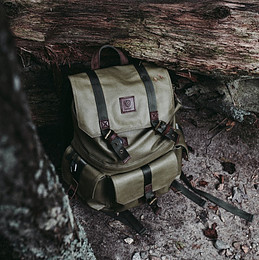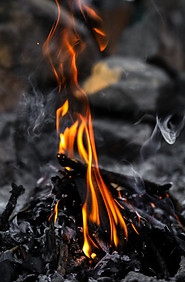Today I am writing an article to explore some of the age-old, essential survival skills of our ancestors.

Essential Survival Skills
I want to mention that there are hundreds of bushcraft survival skills (like concealing a fire) that we could glean off of the frontiersman of old, but those would take many books and years to cover completely. The research you can do on this topic is endless. If you were to combine it with more modern skills and developed technologies, I am not sure one person could cover it in a lifetime.
I intend to focus on primitive skills and will be highlighted in some future articles, today’s article focuses more on some general philosophies of frontiersman survival while mentioning some of the more modern to help adapt.
Settlers across the world were forced to brave the elements and survive for years at a time away from civilization. The skills and lessons they have to teach us about prepping and survival are innumerable, and we have likely forgotten as many valuable lessons as we have retained.
One group of people, famed for their ability to brave the elements and survive against the worst nature could throw at them, were the American frontiersman. Today’s preppers can learn countless lessons by reading the journals and stories of these men who tamed the West.
Traveling Light and Efficiently
A lot of modern survival gear is well designed with new-age materials that allow them to be more effective, as well as smaller and lighter. At the same time, many of those going out to brave the wilderness these days take more equipment than a frontiersman would’ve needed in a year.
Now, of course, packing light or efficiently isn’t some sacred science lost to time (in USMC Recruit Training, one of the first things you’re taught is how to cram all your gear inside your bag as effectively as possible), but the efficiency of our modern gear and equipment, as well as the shorter duration of our stays out in the wild, mean that our ability to “do more with less” like the fur trappers of old has been diminished.
For example, in 1807, a pioneer was recorded as saying, “I was alone and on foot carrying a pack of thirty pounds…” This was during a journey without known parameters, out for an indefinite amount of time. Today’s average hiker is carrying a pack of around 30 pounds as well (the “optimal” weight by backpackers today is said to be 15 lbs), and the long hike Appalachian trail competitors will be carrying around 22lbs.
These two are pretty comparable in terms of daily needs, but you must also take into account the frontiersman was staying out indefinitely, did not have modern and lightweight materials, and had to bring along self-defense items (as well as extra gunpowder) not included in today’s kits. Almost everything he had would be more cumbersome and more massive and would need to last longer.
While expert backpackers of today can get the weight of their gear extremely low, this was a skillset common amongst our ancestors who knew it could mean the difference between life and death.
Some Gear Truly is Essential
Something struck me while I was researching this article. I watched this 18th-century kit video, then an Iron Age Viking woodsmen gear video, then this video about 17th century Scots, and finally a video about the traveling gear of Southeast-Asian Monks.
I realized the things they brought were incredibly similar, even more so than I would have assumed at first. It seems the optimal kit was pretty much agreed on a few thousand years ago, and people have just been tweaking it for their unique circumstances each generation.
This coincides perfectly with more recent theories of the “Five C’s of Survival” which are explored in the last video from the Asian monk’s. These are concepts where multiple experts have gone through and examined the critical necessities of human survival.
The 5 basic survival skills are based on the Five Basic C’s of Survival, they are Cutting, Combustion, Cordage, Container, Cover.
Here are the things that everybody seemed to carry throughout most of human history:
- Weather appropriate clothing w/layer options
- Knife
- Fire-starting kit
- Cordage and/or sewing kit
- Containers for holding water and food
- Extra cup or small bowl for cooking and storage
- Efficient carrying system (bags or straps)
- Extra furs and blankets
Each of these was either carried by all or was omitted in only a case or two (but I’m led to believe these were accidental omissions or circumstantial to that person’s needs).
- Small Axe / Saw tool
- Oilcloth ground covering and/or tent-type structure
- Sharpening Stone
- Compass
- Area Maps
There is an updated/modern 10 C’s that could be a better way to make sure you are covering all of your bases, it’s interesting to see how closely they match up with kits through history. Really, cargo tape, candles, and specifically a cotton bandana are the only items not well covered by past trekkers. They typically considered the Canvas Needle and some sort of compass or source of direction.
To bring it all back around, we can see that by looking at the gear of a frontiersman (in this case, an 18th-century Longhunter), we find complete coverage of the 10 C’s… minus the duct tape for obvious reasons.
3 Frontier Tips You Shouldn’t Leave Home Without
While I didn’t plan to list general frontiersman-themed survival tips in the article, some are too good—or necessary—not to include. Aside from the most essential, fire starting, water purifying, and food gathering, here are some good tips to go along with the thought process that you are truly stranded in the wilderness fighting for survival.
1. You Only Want to Shoot Once When SHTF
Steven Rinella made this point in the past, and though I’m not sure what historical document he pulled it from (he attributed it to Daniel Boone), it makes sense.
Back in the day, when hostile natives shared your hunting grounds, you didn’t want to take a second shot while hunting. A single shot will be heard, but it can be hard to place the direction it came from. The second shot, once hostels are listening, can give away your position much clearer.
2. Cook Wild Meat Thoroughly
Nobody wants worms. Trichinosis can come from eating wild meat that has not been blasted by fire. In the wild (unless you can measure 160 degrees), this means cooking all of your meat until there is no pink left showing. One has to remember the meat you purchase at the convenience of your local grocer is FDA regulated and provided in a controlled manner.
Wild game is eating what they can find, drinking from streams and still water. They may have contracted other bacteria or viruses that can be easily removed by good ole flame sterilization.
3. View the Landscape Through Waterways
Most of us who studied topographical maps in the past did so because we were in the military or taking a trip in the comfort of our gas guzzlers. When I was looking at those maps, I know that the only time I would take notice of rivers or waterways was when they would impede movement or provide a danger zone. For frontiersmen, everything from rivers to creek beds gives away vital information about the surrounding area.
When you are far from civilization, these waterways will still be one of your best methods for orienting yourself and finding people. Small waterways usually flow into bigger ones, and humans tend to live where water flows. If you are hopelessly lost, follow the water.
Essential Survival Skills
Always remember, these skills if studied and practiced can never be taken away from you. They are skills you can pass on to your children and actually be fun to instill. Not to mention, they could be the one thing that saves your life.
Even if you don’t go to Build a Bug Out Bag or Powerless Tools For When There Is No Power and PrepB4, you can revert to the 5 C’s and at least have what you need to get by as our ancestors did.
As always, I hope this helps someone, Be Ready Before You Have To Be!
Chad


Chad, you certainly have been very busy. I see you blog at least once a month and sometimes every two weeks. Great job putting content up on your site! Material is good and you are viewed by readers as a SME (subject matter expert). All good stuff.
I did get the feeling you were trying to sell me with all the Amazon links.
Being new to the affiliate marketing arena I am not exactly sure of the difference of having one link and suggesting materials to purchase of having many links with each going to a specific item. Would it be cleaner to have the words hyperlink instead of putting in the amazon banner with text?
I learned a good deal from the content I read, thank you for that.
Hey Kevin,
Thanks for sharing, I will use the suggestion. I obviously need to promote something to help cover the time I have put in the research, creating content, and site development.
I honestly was not trying to be the salesman though. My goal is to help people realize they are not able to survive if the “grid” went down and help them be more ready if it did.
Thank you for being honest and helping me help others!
Chad
Hi, Chad!
Glad to see your post about Essential Survival Skills.
Modern people are used to living in cement forests, using modern equipment, and taking modern means of transportation. Everyone is already far away from the natural world.
I also like outdoor travel, but only at the elementary level. The skills and equipment mentioned in your article are very useful. I’ll keep it and take a good look at it before my next outdoor trip.
This is a great article, thank you!
Harry
What’s up Harry!?
I too love the outdoors! This is where I actually practice these skills. I sometimes take it to the extreme but I remind myself, even though the kids thought they didn’t enjoy it as much as they should, they have learned skills that no one can ever take away from them. Skills that could someday save their life!
I hope you pay particular attention to how to gather and store water. This is the first thing that will have a real effect on your chances of survival if there is no way out. You can dig a little deeper by clicking this link Water Clean Enough To Drink.
Be Ready Before You Have To Be!
Chad
I like the stats for the weights of the packs. I especially like that somebody figured out those numbers! I think half the weight nowadays is cell phone accessories. Battery packs and beer. Spare designer sunglasses. Safety gear. Helmets and pads and harnesses and bottles of medication and inhalers. Blister cream. Protein bars and energy drinks. I could probably go on, but I won’t…
I think you have made a very important point! I love the humor but the point you make is real. In the event folks are put I a position that they had to unexpectedly and immediately build a bug-out bag and go, this is what they would find themselves in the middle of nowhere with to help them survive.
This is one of the main focuses of this website is to help people understand that there are very few things one needs to survive. It has nothing to do with vanity or comfort. Thanks for your input, I for one enjoyed that! I kind of wish you had gone on! I could use an energy drink too!
Good luck to you sir! Be Ready Before You Have To Be and PrepB4! Click the link to get a free guide on what you need to start!
Thanks,
Chad